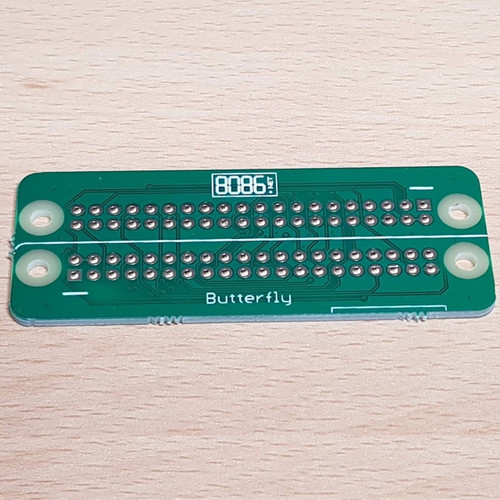

Allows two HAT or pHAT (or a mix) to be attached to a single Raspberry Pi 40 way connector.
All pins are connected *except* ID_SD and ID_SC (HAT EEPROM) which have solder jumpers - this allows HAT which follow the specification correctly to operate without a conflict on the EEPROM. The EEPROM on the primary HAT (over the Pi) is always connected to the Pi and if the solder jumpers are bridged the ID_SD and ID_SC signals are connected to both primary and secondary HAT (for use when only the HAT/pHAT in the secondary connector has an EEPROM). When not using the EEPROM you may need to manually configure the Pi for your HAT.
Before ordering/using multiple HATs you *MUST* check for conflicts - for example enable/select pins when using SPI, I2C addresses and GPIO pin conflicts and modes, we would advise checking on https://pinout.xyz/ and/or with the HAT seller for used pins/modes in use.
The Butterfly board would normally be used with the "Male + Long Female" headers ("Long Female" for the Pi + primary HAT and "Male" for the secondary HAT).
See https://youtu.be/2veZbBhhRwc for a video of the adapter in use.
Soldering Tips
The top side of the board is indicated by the white line in between the connectors (also has white line next to pin 1 on both square GPIO pads), we advise soldering the "Long Female" header first otherwise accessing the pins is difficult.
- "Long Female" pins should be inserted from the bottom of the PCB and be soldered on the top of the board (use holes nearest the "Butterfly" text on the top side).
- "Male" headers should be inserted from the top of the board and soldered on the bottom (use holes nearest the "8086" logo on the top side of the board).



